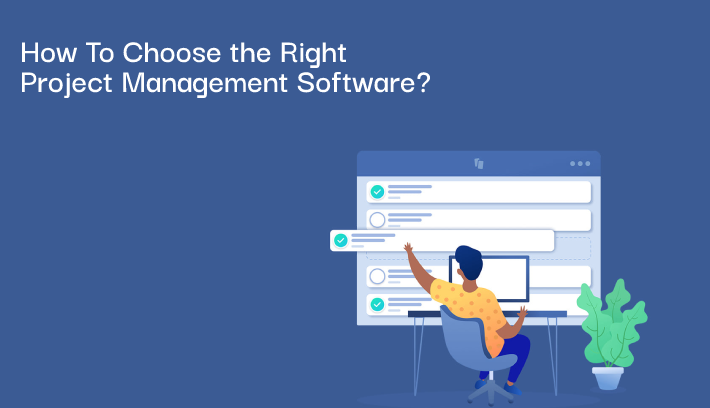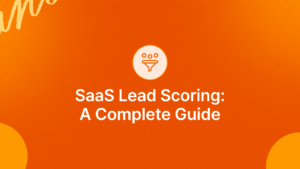Finding the right project management software can feel overwhelming. There are so many options.
So, how do you choose the best one? Project management software helps teams stay organized and on track. It can make a huge difference in productivity and success. But not all software is the same. Some tools are better suited for small teams, while others are built for large enterprises.
Your choice depends on your specific needs and goals. In this blog, we will explore the key factors to consider. You’ll learn what features to look for and how to assess your options. By the end, you will have a clear idea of how to choose the best project management software for your team. Let’s get started!
Introduction To Project Management Software
Project management software helps teams plan, execute, and complete projects. It ensures that all tasks are organized. It makes sure deadlines are met. This software is a key tool for businesses of all sizes.
Importance In Modern Business
Today, project management software is vital for business success. It offers a centralized place to track tasks and deadlines. Teams can collaborate easily from anywhere. This boosts productivity and reduces errors.
Businesses that use project management software can handle more projects at once. They can also deliver higher quality results. This software is essential for staying competitive in the market.
Common Features
Most project management software comes with many helpful features. These include:
- Task Management: Create, assign, and track tasks.
- Time Tracking: Monitor the time spent on each task.
- Collaboration Tools: Share files and communicate with team members.
- Scheduling: Set deadlines and milestones.
- Reporting: Generate reports on project progress and performance.
Some software also offers advanced features like:
- Resource Management: Allocate resources efficiently.
- Budget Tracking: Monitor project expenses.
- Risk Management: Identify and mitigate risks.
Choosing the right project management software depends on your needs. Consider the features that will benefit your team the most.
Need more clarity on Project Management? This post provides the answers you're seeking. Top Project Management Tools for Remote Teams: Maximize Efficiency
Identifying Your Needs
Choosing the best project management software starts with identifying your needs. Understanding what your team requires will help you make the right choice. It ensures that the software fits your work style and goals. Below, we discuss some key factors to consider.
Team Size Considerations
Team size is a crucial factor. Smaller teams need simpler tools. They can manage with basic features. Larger teams require more robust solutions. They need advanced features for coordination. Consider how many people will use the software. This will help narrow down your options.
Project Complexity
Project complexity also matters. Simple projects need basic task management. Complex projects require detailed planning tools. They need timelines, dependencies, and resource management. Evaluate the complexity of your projects. This ensures you choose software with the right features.
Key Features To Look For
Choosing the best project management software is crucial for your team’s success. The right tool can streamline processes, improve collaboration, and ensure timely project completion. But what are the key features to look for? Let’s break it down.
Task Management
Effective task management is the backbone of any project management software. Look for features that allow you to:
- Create and assign tasks easily.
- Set deadlines and priorities.
- Track progress with visual indicators.
- Integrate with your calendar.
These features help you keep track of who is doing what. They also ensure that no task falls through the cracks.
Collaboration Tools
Strong collaboration tools are essential for team communication. Ensure the software offers:
- Real-time chat to discuss tasks.
- File sharing for easy access to documents.
- Comment sections within tasks.
- Notification systems to keep everyone updated.
Good collaboration tools reduce the need for endless email chains. They keep all communication in one place, making it easier to find information.

Credit: desklog.io
Budget And Cost Considerations
Choosing the right project management software involves more than just its features. Budget and cost considerations are vital. It’s essential to understand the financial commitment. This includes knowing the difference between free and paid options. Also, be aware of any hidden costs. Let’s break these down for better clarity.
Enhance your knowledge on Project Management by exploring this related piece. Free Project Management Software for Startups: Boost Productivity Today
Free Vs. Paid Options
Many project management tools offer both free and paid versions. Free versions are great for small teams. They often come with basic features. These can include task management, calendars, and simple collaboration tools.
Paid versions, on the other hand, offer more advanced features. These may include integrations with other software, detailed reporting, and customer support. The cost can vary. It might be a monthly subscription or a one-time purchase.
To decide between free and paid options, consider your team’s needs. If you need advanced features, a paid option may be better. Compare the features and decide what fits your budget.
Hidden Costs
Sometimes, the initial cost isn’t the only expense. Be wary of hidden costs. These can include:
- Extra charges for additional users
- Fees for extra storage
- Costs for premium customer support
Hidden costs can add up quickly. Always read the fine print before committing. Also, consider the cost of training your team to use the new software. This can include time and money spent on training sessions.
By understanding these costs, you can avoid unexpected expenses. Make sure the total cost fits within your budget. This ensures you get the best value for your money.
User-friendliness
Choosing the best project management software can be a daunting task. Among many factors, user-friendliness stands out as a crucial element. A software tool that’s easy to use can significantly enhance productivity. It minimizes the time spent on training and helps teams focus on their projects. Below, we explore the importance of user-friendliness under two main aspects: Ease of Use and Learning Curve.
Ease Of Use
One of the first things to consider is how easy the software is to use. A good project management tool should have an intuitive interface. Users should be able to navigate through the features without much hassle.
- Simple, clean design
- Clear, concise instructions
- Accessible features
These elements ensure that team members can quickly learn and start using the tool. They reduce the time spent on figuring out how things work. This boosts overall efficiency.
Explore the depths of Project Management with this informative post. Benefits of Kanban Boards for Project Tracking: Boost Efficiency
Learning Curve
The learning curve is another important factor. A steep learning curve can deter team members from using the software effectively. Choosing a tool with a gentle learning curve is essential.
- Offers comprehensive tutorials
- Provides customer support
- Includes practice tasks
These features make it easier for new users to get up to speed. It ensures that everyone can contribute to projects without delays.
Here’s a comparison table to summarize the key points:
| Criteria | Details |
|---|---|
| Ease of Use | Intuitive interface, simple design, accessible features |
| Learning Curve | Comprehensive tutorials, customer support, practice tasks |

Credit: churchoperationstoolkit.com
Integration With Existing Tools
When choosing the best project management software, integration with existing tools is crucial. This ensures smooth workflows and saves time. Here, we will explore key factors like software compatibility and API availability.
Software Compatibility
Your new project management software must work well with tools you already use. Check if it integrates with your email, calendar, and communication apps. A good fit will make your team more efficient. It reduces the need to switch between different platforms.
Many popular tools offer plug-and-play options. This means you can easily connect them without technical skills. Always review the software’s compatibility list. It helps to ensure seamless integration.
Api Availability
API stands for Application Programming Interface. It lets different software applications talk to each other. Having API availability in your project management software is a big plus. It allows custom integrations that fit your unique needs.
With APIs, you can automate tasks and data transfers between systems. This saves time and reduces errors. Look for software that offers robust API documentation. It makes the integration process smoother and easier to manage.
Security And Compliance
Choosing the best project management software involves many factors. One crucial aspect is Security and Compliance. Ensuring your data is safe and meets regulatory standards is paramount. Below, we explore key elements of security and compliance in project management software.
Data Encryption
Data encryption is essential for protecting sensitive information. It ensures that only authorized users can access your data. Look for software that offers end-to-end encryption. This means your data is encrypted both during transfer and when stored.
| Encryption Type | Purpose |
|---|---|
| End-to-End Encryption | Protects data during transfer and storage |
| SSL/TLS Encryption | Secures data during transfer |
Check if the software uses SSL/TLS encryption for secure data transfer. This helps protect your data against interception.
Regulatory Standards
Compliance with regulatory standards is non-negotiable. It ensures that the software meets legal requirements for data protection. Some important standards to look for include:
- GDPR – General Data Protection Regulation, crucial for European users.
- HIPAA – Health Insurance Portability and Accountability Act, important for healthcare data.
- SOC 2 – Service Organization Control 2, focuses on data security and privacy.
Ensure the software complies with relevant regulations in your industry. This protects your business from legal issues and builds trust with your clients.
By focusing on Data Encryption and Regulatory Standards, you can ensure your project management software is both secure and compliant. This safeguards your data and meets legal requirements.
Customer Support And Training
Choosing the best project management software is crucial for the success of any project. One key factor to consider is the Customer Support and Training provided by the software company. Quality support and training ensure a smooth implementation and efficient use of the software.
Support Availability
Ensure the software offers support when you need it. Look for availability through multiple channels like:
- Phone
- Live chat
Check if support is available 24/7 or during business hours. Some software providers offer dedicated account managers for personalized support.
Training Resources
A good project management software should offer comprehensive training resources. These can include:
- Video tutorials
- Webinars
- Online documentation
- Interactive courses
Training resources help users learn the software quickly. This reduces the learning curve and increases productivity.
Below is a table summarizing the types of training resources:
| Type of Resource | Description |
|---|---|
| Video tutorials | Short videos explaining features and functionalities. |
| Webinars | Live sessions with Q&A to dive deep into specific topics. |
| Online documentation | Detailed guides and FAQs available on the website. |
| Interactive courses | Structured courses with quizzes and assignments. |
Good training resources can significantly improve user satisfaction and proficiency. Always evaluate the quality and accessibility of these resources before choosing the software.
Real-world Case Studies
Real-world case studies provide valuable insights into how different businesses use project management software. They highlight what worked, what didn’t, and how others can learn from these experiences. This section dives into successful implementations and lessons learned from various companies.
Successful Implementations
Many companies have transformed their operations using project management software. Let’s look at a few examples:
| Company | Software Used | Results |
|---|---|---|
| ABC Corp | Asana | Improved team collaboration by 40% |
| XYZ Ltd | Trello | Reduced project completion time by 30% |
| 123 Inc | Monday.com | Increased project visibility and accountability |
ABC Corp chose Asana to streamline tasks and boost communication. The result was a 40% improvement in team collaboration. XYZ Ltd implemented Trello for better project tracking. They saw a 30% reduction in project completion time. 123 Inc used Monday.com to enhance project visibility. This led to better accountability among team members.
Lessons Learned
Learning from the experiences of others can prevent costly mistakes. Here are some key takeaways:
- Customization: Choose software that fits your specific needs.
- Training: Invest in proper training for all users.
- Integration: Ensure the software integrates with existing tools.
- Support: Select a vendor with reliable customer support.
Customization is crucial. Ensure the software matches your workflow. Proper training is vital. All users need to know how to use the tools effectively. Integration with existing systems saves time and reduces errors. Reliable customer support is essential. Quick problem resolution can keep projects on track.
Conclusion And Recommendations
Select project management software that meets your team’s needs and budget. Evaluate features, ease of use, and support options.
Choosing the best project management software can be a challenge. With so many options, it’s important to know what to look for. This section will give you clear recommendations to help you make an informed decision.
Top Picks
When selecting project management software, some tools stand out. Here are our top picks. Trello is great for visual task management. It uses boards, lists, and cards to keep tasks organized. Asana is another strong choice. It offers robust features and is user-friendly. Monday.com is also excellent. It provides customizable workflows and is ideal for team collaboration. These tools offer a mix of simplicity and functionality.
Final Tips
Before choosing, consider your team’s needs. Assess the size of your team and the complexity of your projects. Look for software that fits your budget. Most tools offer free trials. Use them to test the features. Check if the software integrates with other tools you use. Good customer support is important. Ensure the software provides help when needed. Finally, read user reviews. They offer valuable insights from real users. With these tips, you’ll find the best project management software for your team.
Frequently Asked Questions
What Is Project Management Software?
Project management software helps teams plan, organize, and manage tasks efficiently. It offers tools for collaboration, scheduling, and tracking progress.
Why Is Project Management Software Important?
Project management software streamlines workflows, improves communication, and ensures deadlines are met. It helps teams stay organized and productive.
How Do I Choose Project Management Software?
To choose project management software, consider your team’s needs, budget, and the software’s features. Check user reviews.
What Features Should Project Management Software Have?
Essential features include task management, collaboration tools, time tracking, and reporting. Customizability is a plus.
Conclusion
Choosing the best project management software doesn’t have to be difficult. Focus on your team’s needs. Consider your budget. Look for user-friendly features. Read reviews and ask for recommendations. Test options with free trials. The right software boosts productivity and keeps projects on track.
Make an informed choice. Your team will thank you.









